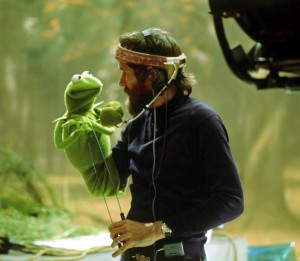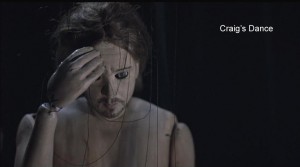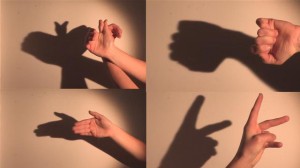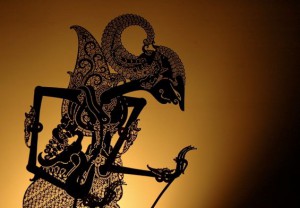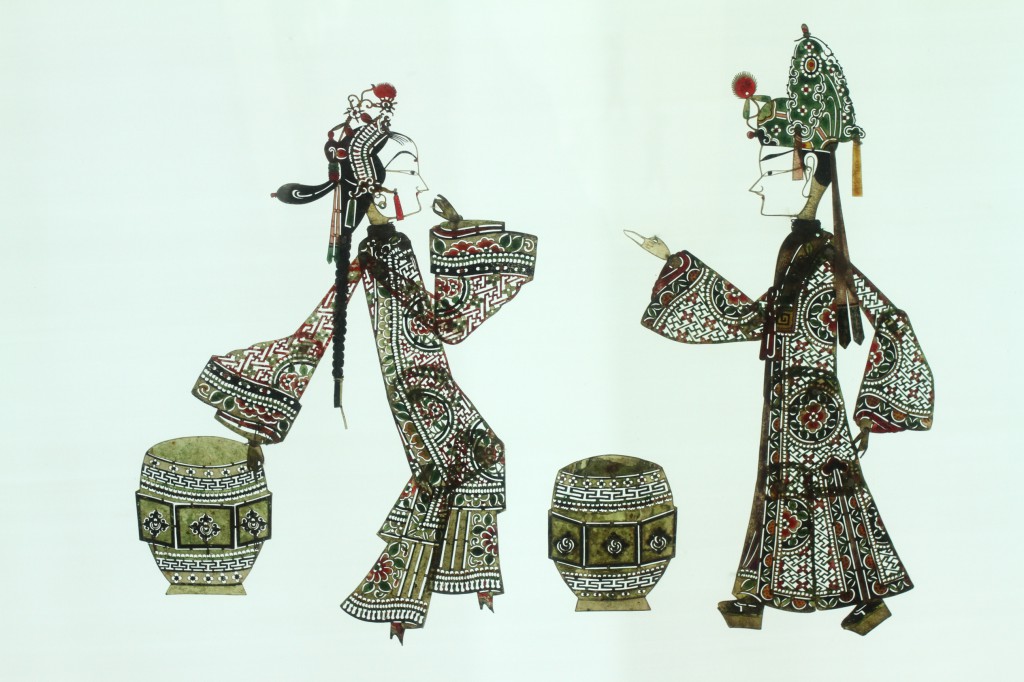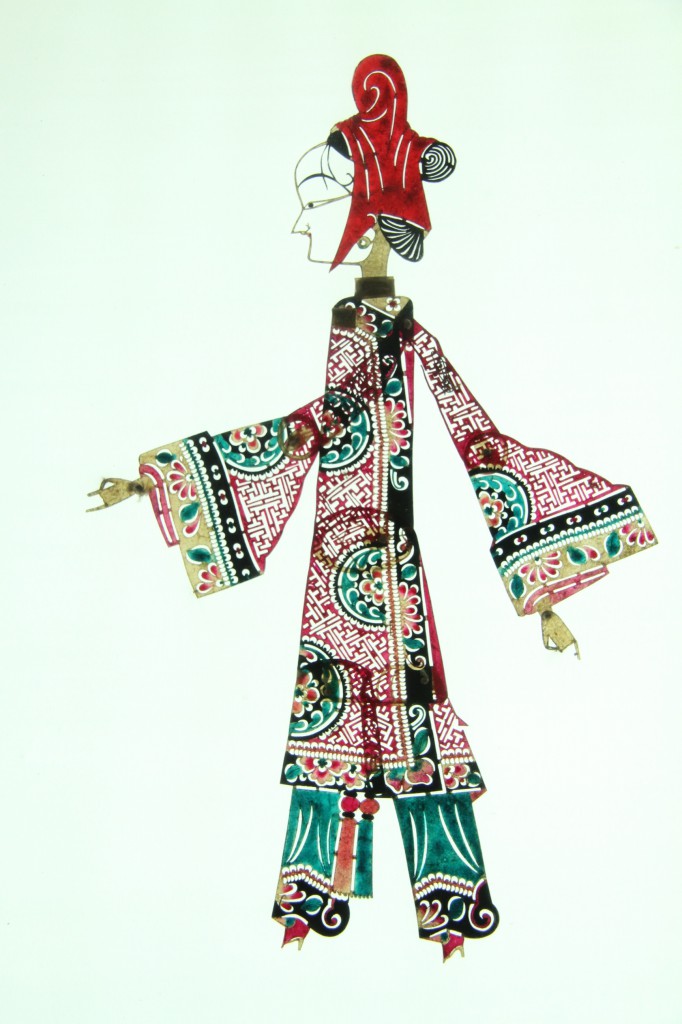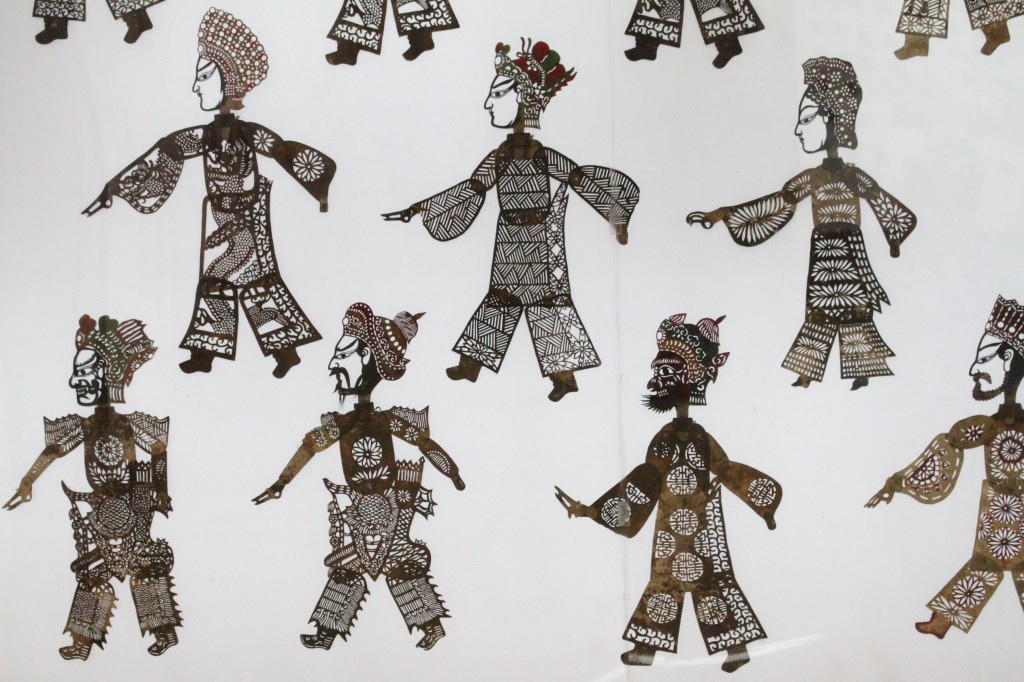Chinese Puppets: Assembling the Old and the Live
Distant Reading Probe. Presenting on Oct 10th.
When I tell people in North America that I research Chinese shadow puppetry, 99.5% of the time I get one of three reactions:
60% of them say, “You mean like the Jim Henson’s, the Muppets?
27.5% of them say, “You mean like Being John Malkovich?”
12% of them say, “You mean you research this (gesturing)?”
And the rarest of all reactions: .05% of them say, “I’ve heard of Indonesian shadow puppetry, but…”*
*Pardon the rough guesstimate of percentages here.
Chinese shadow puppetry is literally on no one’s radar.
Chinese shadow puppetry is China’s widest spread folk art form and for a country roughly the size of America with a population of around 1.3 billion people, that’s saying something.
Its origins are too old and its documentation too nonexistent to corroborate, although the best educated guess places its genesis somewhere around the Tang Dynasty (618 AD). The art form has bravely ridden a tumultuous path through dynastic changes, ideological shifts, repression and other such fun with incredible resilience until the 1900s where Japanese occupation, civil war, and both the Communist and Cultural Revolution laid deadening blows. After China opened up in the late 1970s, it’s been limping along ever since and fading steadily over the last 15 years. My work involves traditional apprenticeship with the last remaining practitioners of the form (the puppet makers) who are almost all over the age of 60, male and living deep in the rural Chinese countryside.
Needless to say, there’s a lot to unpack.
Our first week of class introduced me to Circulation and Actor-Network theory and encouraged me to begin to “foreground the social life of the form rather than off of it.” (Gaonkar and Povinelli 2003, 387) Our second week readings about mess put me at ease in my research’s methodological uncleanliness: “It needs to be messy and heterogeneous, because that is the way it, research, actually is.”(Law, 3) Last week’s reading on interpretation steered me away from “theories and discourses that are inhabited by such totalitarian specters as causality, philosophy of history, and the transcendental subject.”(Gumbrecht 1994, 402) Foucault has me focusing on relative beginnings. But, still, I am having a hard time Drawing It All Together with my own work. I understand the examples with handguns and computers, but what does that have to do with puppets – these performative artifacts. Old puppets. Old Chinese puppets.
In this week’s reading, Bruno Latour takes us through a reimagining of the existing ‘due process’ that scientists and moralists have been abiding by for some time now. Instead of the dichotomous ‘fact vs. values’ binary, Latour sets up an elegant map to show us a new process that takes any potential appellants through a more fluid, democratic round of inquiry and assessment by a unified collective.
…Laid end to end, the four imperatives (perplexity, consultation, hierarchy, institution) require that we not bring an end to perplexity too abruptly, that we not unduly accelerate the consultation, that we not forget to look for compatibility with established propositions, and finally that we not register new states of the world without an explicit motivation.
(Latour 2004, 119)
Latour only mentions ‘articulations’ once in his chapter, but his thinking runs parallel to Slack and Wise’s in that they are both rejecting the old fossilized modes of discourse based on mechanistic causality. Less of ‘guns kill people’ and more of an understanding that guns are ‘made up of myriad articulations that make some things possible, others not.’ (Slack & Wise 2005, 112) They’re both advocating we acknowledge the inherent impossibility of keeping to our perfectly made categories, stagnant answers and the deceptive knowability in a fact or object.
After a few delicious chapters taking us through the finer points of causality and agency (filled with fabulously illustrative examples), Slack and Wise gently encourage us to move towards Articulation and Assemblage, which is not unlike the Actor-Network theory.
Articulation draws attention to the contingent relations among practices, representations, and experiences that make up the world. Assemblage draws attention to the structured and affective nature and work of these articulations.
(Slack and Wise 2005, 126)
As I begin looking for tools to help me wield some sort of comprehensibility from my subject, I’m drawn to these ideas as a practitioner. There’s tangibility in relationships, connections and articulations that can be spun into a web of assemblage that I can make sense of. Now, where and how do I make this work with the Old Chinese puppets.
For the sake of our sanity and the storage limits of the wordpress server, I’m going to limit this probe’s examination to a simple case study of the same assemblage pre-1930s (when shadow puppetry was still enjoying a heydey) and one in 2013. As every ‘element is itself an articulated identity’, let’s start with a Chinese shadow puppet.
I started compiling a long list of articulations and distilled them down to those with particular ‘tendential force’ (Hall). Pre 1930s, this shadow puppet is animal hide (particular to any given region), it is the craft of a master or novice, an aesthetic which is attributed to an ‘ideology’ of a given region, it represents heritage, ritual and ceremony, it is oral history embodied, it is a voice of the masses, the escape of entertainment, the delight of magic, the promise of a good harvest next spring, the enigma and wonderment that is shadow play. It is important to note that while this puppet assemblage circulated heavily within the peasant communities, it remained outside the interests of the upper class through most of its evolution, and especially in the 1930s.
Chinese Shadow Puppet Sunlit Show in the hills of Bazhong, Sichuan Province Video
Interesting articulations at work between the troupe and their audience. This is a troupe that has been performing within their village for over 30 years. My subjectivity is painfully obvious as I watch this now; the only foreigner with a camera, editing a ‘highlights’ compilation.
Take this assemblage today: the puppet is animal hide and it is the craft of a maker and aesthetic of a region, but ideas of both craft and aesthetic have drastically changed in an exploding factory economy. Instead of representing an unbroken oral history, it represents an outdated way of life and the obsolete ‘feudalistic’ times. It is no longer that enigma of shadow and light, but more often thought of as a low-brow folk art form, or a pre-cursor to film. And though the class system has been significantly reworked in the last 80 years, there isn’t enough of a general interest to matter much. The puppet today is articulated now by its relationship to tourist trade more than to village life, to CCTV (China’s state television broadcaster) Chinese Heritage specials rather than the center of community celebrations.
CCTV “Shadow Puppetry Revived” Video
Multiple layers of assemblage here: government funded station covering a government funded state troupe which is ‘reimagining’ shadow puppetry. The short clip of shadow puppetry that is actually shown is from a show developed in 1952 as the first ever governmentally disseminated ‘National’ shadow play.
“Perhaps the crucial thing to understand about articulation is the assertion that culture is made up of articulations (or connections) that are contingent. Contingency implies that these articulations or connections are not necessary, and it is possible that they could connect otherwise.” (Slack & Wise 2005, 127) We can see how contingent they were in the previous examples. As I move further in my own research, I’d like to also examine the tendential force between these articulations through time to ascertain better what kind of change renders what kind of reaction in the articulation (i.e. small changes in cultural ideology change weaker connections and larger changes can disarticulate stronger ones). “If you want to imagine or contribute to change, look more closely at the particular articulations that account for the particular constellation of the assemblage. Where are there lines of tendential force, those articulations that you may not be able to disarticulate?…consider where there might be lines, connections, relationships, and articulations that could be altered.” (Slack & Wise 2005, 132)
I’ll most likely continue with this exercise and take the puppet assemblage map to the north and south of China, to urban and rural spaces as I plot it along the timeline. And, each time they help identify areas of greatest change, articulations with the most tendential force and a broader understanding of how assemblages have shifted over time and geography.
My initial examples in this probe, of reactions to my professed passion, expose some of the ways in which the existing networks and assemblages effect the proximity of the form to the North American public. You can surmise, from the examples, that people in North America are deriving most of their knowledge of puppet forms (let alone Chinese shadow) from television, film and the internet. (You can also tell that the Muppets are still enjoying puppet domination in North America, and with good reason.) A Chinese shadow puppet assemblage in North America, currently, has few articulations.
Because the majority of North Americans will most likely never experience a live performance in situ, I am forced to re-examine not only the articulations and assemblages that make up their possible relationship or lack thereof to Chinese shadow puppetry but more importantly, perhaps, their likely materialities of communications with the form if and when they do meet it. What materialities are possible for this form to reach an overseas audience? Initially, I was hesitant to attempt re-presenting Chinese shadow puppetry to a western audience, as the issues of documenting and re-presenting (representing) live performance are plentiful. It’s a friggin’ black hole. “Live performance betrays its ontological roots as far as it allows itself to be documented.” (Phelan) But what are my options? Isn’t anything other than bringing the classroom to a mountain village in Gansu province to see a show a compromise? Through the internet, I can reach more people, but in what way. What’s the impact of an image versus a video? What will be understood from it? Is the connection enough to garner a like, a comment, a share, or an actual investment? Is it tendential? Can we use these theories to not only look at existing articulations but also to consider articulations we’d like to make?
These are just the beginnings of my thoughts, a bit tidier than they were six weeks ago, but still at the beginning of the process. And while I missed talking about everything, I’ve hopefully starting talking about something. Is there a better way to articulate or assemble these parts? Are there other ways to look at this issue of materiality and live performance? Looking forward to hearing yours thoughts and questions as well and perhaps we’ll be able to Draw It All Together, together.
Works Cited
Chen, Fan. Chinese shadow theatre history, popular religion, and women warriors. Montreal [Que.: McGill-Queen’s University Press, 2007. Print.
Jiang, Yuxiang. Zhongguo ying xi. Di 1 ban. ed. Chengdu: Sichuan ren min chu ban she :, 19911992. Print.
Latour, Bruno. Politics of nature: how to bring the sciences into democracy. Cambridge, Mass.: Harvard University Press, 2004. Print.
Phelan, Peggy. Unmarked the politics of performance. London: Routledge, 1993. Print.
Slack, Jennifer Daryl, and J. Macgregor Wise. Culture + technology: a primer. New York: Peter Lang, 2005. Print.
